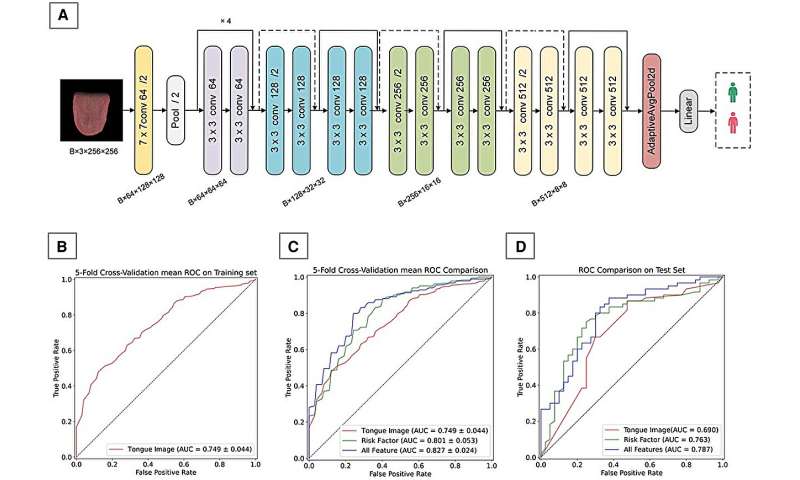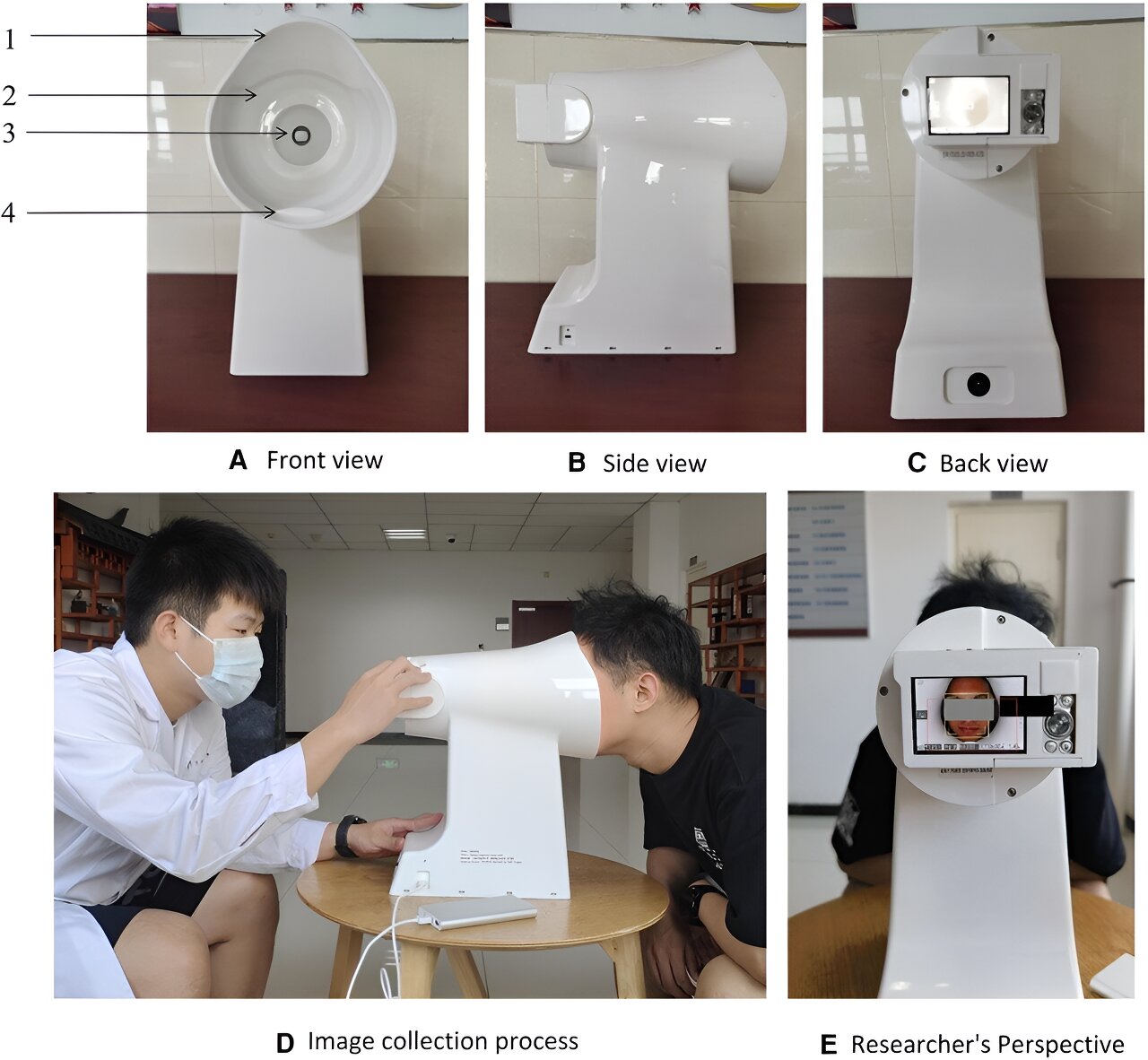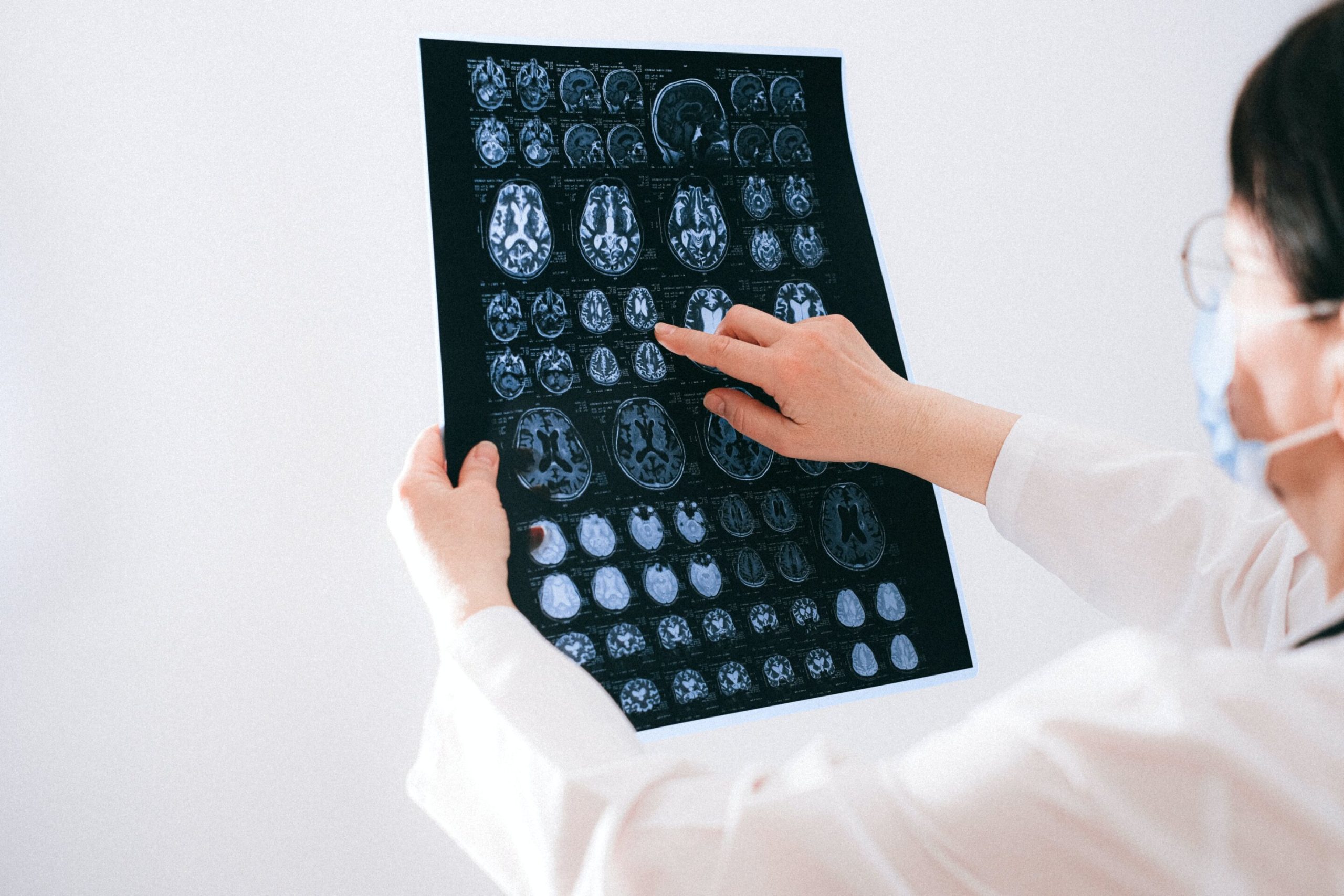
Coronary artery disease (CAD) is the most common cause of illness-based death throughout the world. According to the World Health Organization, CAD causes 17.9 million deaths per year worldwide, nearly one-third of all illness-based deaths annually.
Coronary angiography is currently the best method of confirming a CAD diagnosis, but it is expensive and invasive, poses risks to patients, and is not suitable for early diagnosis and assessing disease risk.
Seeking a safer, lower-cost and more efficient diagnostic method, a research team from Beijing University of Chinese Medicine’s School of Traditional Chinese Medicine, Beijing University of Chinese Medicine’s School of Life Science, and Hunan University of Chinese Medicine’s School of Traditional Chinese Medicine has used artificial intelligence (AI) to develop a diagnostic algorithm based on tongue imaging. Their work is published in Frontiers in Cardiovascular Medicine.
Recent research into the development of diagnostic models for CAD has focused on clinical risk factors as variables. Recent studies have also established that additional biological components such as pulse waves and facial appearance may play considerable roles in establishing a CAD diagnosis.
However, while a patient’s symptoms and signs form the basis of a clinical diagnosis, the researchers note that Traditional Chinese Medicine proceeds differently, though quite effectively.
How traditional Chinese medicine informs this new work
“Traditional Chinese medicine (TCM) employs unique and effective diagnostic strategies, particularly in observing the external conditions of patients. TCM theory posits that ‘internal diseases manifest externally,’ thereby allowing practitioners to gauge the severity of illnesses through observation,” writes the team in the new study.
Key to TCM observation is tongue diagnosis, which includes assessing the tongue’s color, coating, and shape. The tongue, replete with nerves and blood vessels, functions as an integral part of the cardiovascular system, and its appearance can change as systemic illnesses and conditions develop, especially those affecting blood circulation. Moreover, at least 14 studies since 2019 have established tongue observation as an effective means of disease diagnosis.
With this knowledge, the team sought to ascertain whether tongue images could serve as a determinative basis for non-invasively maximizing CAD diagnosis.
-

Data preprocessing for tongue images. (A) DeepLabV3 + framework diagram, (B) model training loss function graph, (C) preprocessing effect on tongue image. Credit: Frontiers in Cardiovascular Medicine (2024). DOI: 10.3389/fcvm.2024.1384977
-

Tongue image-based CAD diagnostic algorithm. (A) ResNet-18 framework used in this study, (B) 5-fold cross-validation mean ROC on training set, (C) 5-fold cross-validation mean ROC Comparison on training set, (D) performance comparison of different feature inputs on the validation set. Credit: Frontiers in Cardiovascular Medicine (2024). DOI: 10.3389/fcvm.2024.1384977
Developing a CAD diagnostic model
To create their machine learning structure, the team selected the ResNet-18 network, pre-trained on a dataset from ImageNet. They built two CAD diagnostic frameworks: one based on CAD risk factors alone, and a second one incorporating deep features of tongue images with CAD risk factors. Their selected algorithm for extraction of tongue features, based on the Deeplab V3 + framework, demonstrated greater than 99% overall accuracy.
The team evaluated several machine learning algorithms and ultimately selected XGBoost, which yielded the best results on a classification task involving “deep features of tongue images” and risk factors.
In addition, they explain that when they compared machine learning algorithms—some programmed only with risk factors and others with risk factors and tongue image features—they determined that “the inclusion of tongue image features significantly enhanced algorithm performance, indicating that adding tongue features as input variables positively contributes to algorithm optimization.”
Between March 2019 and November 2022, the researchers recruited hypertensive patients between ages 18 and 85 from four different hospitals, ultimately compiling a study cohort of 244 patients with hypertension and 166 additional patients exhibiting hypertension combined with CAD.
Results and limitations
Among the notable results, the team’s CAD diagnostic algorithm performed especially well in test subjects aged 65 and older, and returned similar results for men and women, thus demonstrating good generalization ability. It also showed greater judgment accuracy in cases with three or more risk factors, “highlighting the importance of considering multiple risk factors in the diagnosis of CAD,” write the researchers.
The study’s limitations include a lack of patients from varying countries and ethnicities; a small sample size based only on those with hypertension; its use of a single type of equipment for collecting tongue images, which limits the diagnostic model’s applicability with alternative collection devices and in varying situations.
The researchers suggest that future work should include a larger and broader study population in order to validate and optimize their diagnostic model. They also note that integrating additional biomarkers with tongue images could enable the creation of a broader model. However, this research serves as a useful basis for next steps.
“Our work introduces a novel perspective, suggesting that tongue images have applicable diagnostic value for CAD diagnosis,” the researchers conclude. “Tongue image features could become new risk indicators for CAD, demonstrating the feasibility of integrating TCM theories with modern technology.”
More information:
Mengyao Duan et al, Feasibility of tongue image detection for coronary artery disease: based on deep learning, Frontiers in Cardiovascular Medicine (2024). DOI: 10.3389/fcvm.2024.1384977
© 2024 Science X Network
Citation:
AI-based tongue imaging could help enable non-invasive detection of coronary artery disease (2024, August 30)
retrieved 1 September 2024
from https://medicalxpress.com/news/2024-08-ai-based-tongue-imaging-enable.html
This document is subject to copyright. Apart from any fair dealing for the purpose of private study or research, no
part may be reproduced without the written permission. The content is provided for information purposes only.


